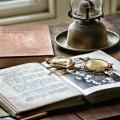MOST people in Andover will recognise this view of 1905, though much of the detail has changed since then. To the right, the Wesleyan Methodist church of 1906 was yet to be built, though the land looks to have been undergoing preparation, while to the right, the giant wall of brick that now dominates the site, was occupied by less strident architecture.
In the centre is the familiar town mill or Town Mills as it was formerly known. The reason for the plural is that there were two mills on the site, one for grinding wheat and the other for malt. The Domesday Book of 1086 states that there were six mills in Andover but does not name them. However, any mill needs a body of water for power and this would have been one of the Domesday six, being on a prime site across the river Anton.
Mills provided an essential service to the farmers of the district, grinding their corn in readiness for the market. For this they charged a toll and there were penalties for charging too much. In 1379 the local court fined John Lytelmulward (an example of a surname that describes his job - the town mill warden) for an unjust toll while in 1598 William North was fined for taking a toll for 7lbs in weight when it should have been that for 2lbs. North was also in trouble for keeping pigs and fowl at the mill. As was their habit, they kept eating the ‘the grain of Her Majesty’s subjects which is brought to be ground’.
There are two stones plaques set into the wall of the mill buildings we see today: one is on the mill house, here hidden by trees, to say that it was rebuilt by the then MP for Andover Sir John Griffin Griffin in 1753 and the other on the mill itself stating that it was rebuilt by John Gibbs, millwright, in 1764. We have no knowledge of what any former mill on the site looked like or whether parts of an older mill are still present in today’s building; eighteenth-
century builders would have had no concerns over heritage but simple economics would have encouraged them to retain old structures that could be incorporated within a replacement building.
This was inevitable over the course of 1000 years or so. One instance was in 1510 when the mill was described as a vacant place, suggesting some catastrophic destruction, perhaps by fire or swept away by water. The governing corporation then leased the site to Richard Asheton with permission to rebuild. Twenty years later, both the mill and its land were sold outright to mercer Richard Gilbert. Perhaps the governing body realised its mistake, for in 1601 the corporation bought it all back for £170 and kept it for over 300 years.
In 1904 the borough council sold the mill. The resident miller was then Elijah Levi Hoare who stayed until the mid 1920s and was then succeeded by Charles A. King and Son. They were from Wiltshire and it was the son, Cecil John King, who ran the Andover mill for most of the King family’s tenure. The firm’s bold black lettering on a white background has been restored in recent years and the mill has now entered a new life as a public house, the interior renovated to a high standard, complete with waterwheel, to reflect and take full advantage of its historic use.






Comments: Our rules
We want our comments to be a lively and valuable part of our community - a place where readers can debate and engage with the most important local issues. The ability to comment on our stories is a privilege, not a right, however, and that privilege may be withdrawn if it is abused or misused.
Please report any comments that break our rules.
Read the rules hereLast Updated:
Report this comment Cancel